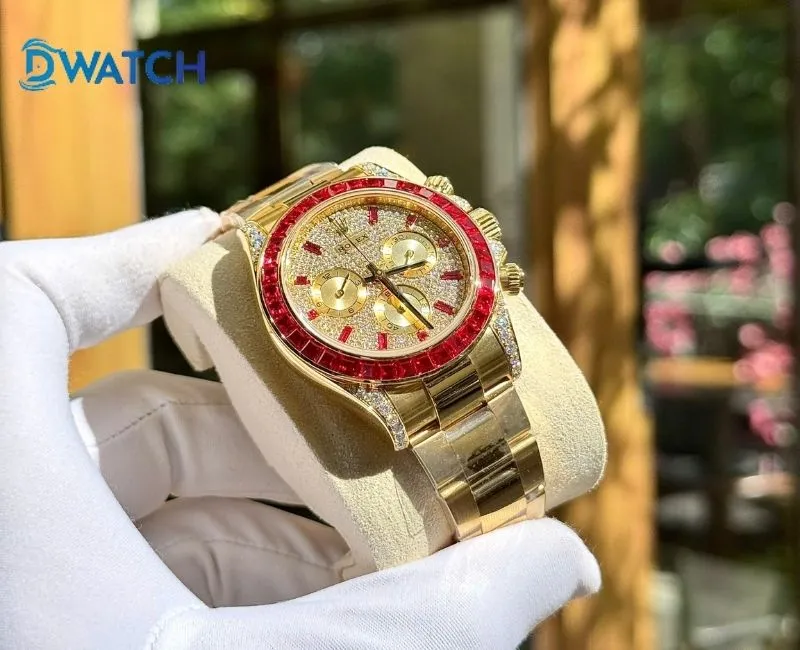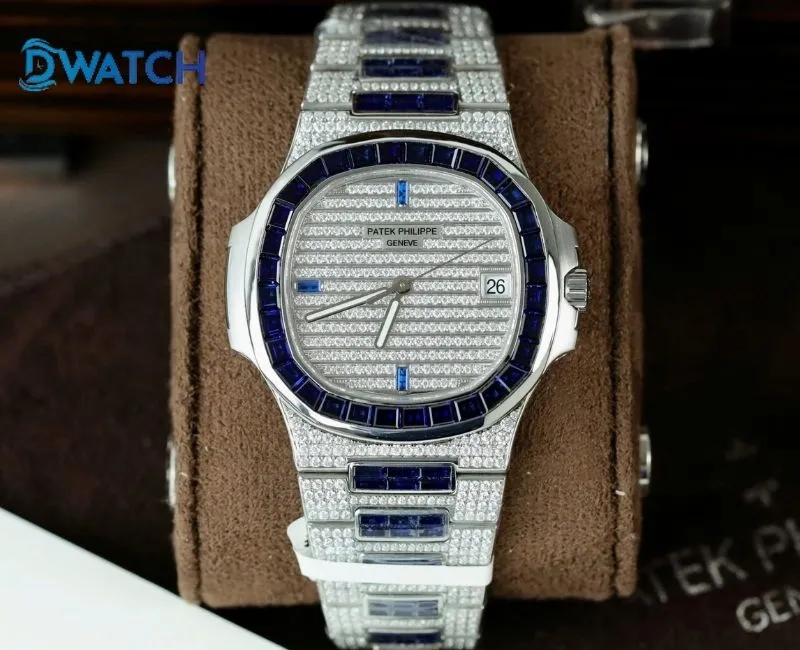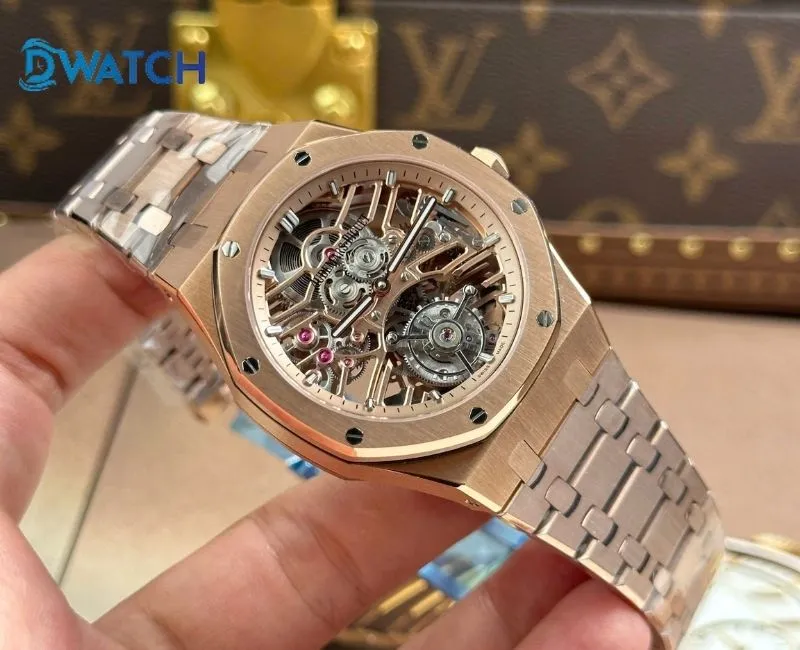Uncategorized
Why Swiss Watches Are the Most Expensive in the World
Every year, the Swiss watch industry exports around 30 million timepieces worldwide, generating nearly 20 billion USD in revenue. On average, a Swiss watch costs about 700 USD, the highest compared to the global market. So, why are Swiss watches the most expensive in the world, and what makes collectors willing to pay such high prices? Let’s find out with DWatch.
1. Six Reasons Explaining Why Swiss Watches Are the Most Expensive in the World
To understand why Swiss watches are the most expensive in the world, let’s take a closer look at six core factors that shape their prestige and lasting value.
1.1 Crafted From Premium and Rare Materials
While many Japanese or American brands still rely on regular steel and mineral glass prone to scratches, Swiss houses use 316L steel and even Rolex’s exclusive 904L steel, which is tougher and shinier over time. Watch crystals are almost always sapphire, several times harder than mineral glass, making them highly resistant to scratches. Straps are often made from alligator or calf leather, hand-processed for softness and durability.
In the luxury segment, brands like Patek Philippe or Audemars Piguet go further by using solid gold and platinum for cases. Many high-end models are even set with diamonds or emeralds on the dial and bezel. Every detail is handcrafted, bringing exceptional refinement and collectible value few other countries can match.

1.2 Powerful Movements With Ultimate Precision and Durability
The movement is the heart that gives Swiss watches their lasting value, setting them apart from brands worldwide. Each component is hand-assembled, ensuring stability and longevity. Standard beat frequency is 28,800 vph, allowing the second hand to sweep smoothly and keeping accuracy far superior to common calibers.
Some models even receive the COSC Chronometer certification, the strictest in the world, allowing only -4/+6 seconds of deviation per day. This recognition makes Swiss watches a symbol of precision and proves the unrivaled mastery of Swiss watchmaking.
1.3 An Astonishing Heritage in the Global Watch Industry
The story of Swiss watchmaking began in the 16th century in Geneva. When Jean Calvin called on citizens to abandon jewelry, goldsmiths turned to watchmaking as a new craft. Geneva soon became the hub of horology, where apprentices trained for at least five years and had to create two fully functional watches to earn the title of watchmaker.
By the 19th century, inventors like Georges Leschot and Frédéric Ingold elevated Swiss accuracy, paving the way for brands such as Omega, Rolex, Longines, and Patek Philippe. In the 20th century, Switzerland pioneered wristwatches, automatic movements, and even introduced the first quartz watch in 1967. Over 400 years of development have made Switzerland the global standard in watchmaking.
1.4 Timeless Elegance That Never Goes Out of Style
Swiss watches are defined by iconic, enduring designs. Classics like the Royal Oak by Audemars Piguet, the Reverso by Jaeger-LeCoultre, or the Santos de Cartier prove that refined aesthetics can outlast any fleeting fashion trend. Decades after their debut, these models remain as desirable as ever.
Many business leaders and Hollywood stars rely on Swiss watches to shape their image. Brad Pitt has been seen with TAG Heuer Carrera, while Leonardo DiCaprio owns a Rolex GMT-Master II and a Breitling Chrono Avenger. For them, a Swiss watch is not just a tool to tell time but a statement of identity and prestige.

1.5 The Prestigious Swiss Made Standard
The label “Swiss Made” has long been a symbol every watch enthusiast desires. More than just an origin mark, it represents strict legal standards protected by Swiss law. To earn this label, a watch must use a Swiss-made movement, have at least 60% of its components from Switzerland, and be fully assembled and tested domestically.
There is also the “Swiss Movement” label, applied to watches with Swiss movements but a lower percentage of Swiss components (at least 50%). Despite the differences, both labels demonstrate rigorous quality control, cementing Switzerland’s reputation as the benchmark of horology worldwide.
2. Experience Iconic Swiss Designs at an Affordable Price With Best Replica Watches
Authentic Swiss watches are famous for their high prices, and some models require months or even years on waiting lists. That’s why high-end replica watches have become an alternative for enthusiasts who admire Swiss design but are not ready to invest heavily.
The strength of best replica lies in faithfully mirroring the original: dial layouts, hands, straps, and even logos. Some versions are set with diamonds, gemstones, or plated in real gold to recreate the genuine experience. Side by side with an authentic model, it is nearly impossible to tell the difference without opening the movement.

3. DWatch – Trusted Distributor of Swiss Best Replica Watches in Vietnam
In Vietnam, DWatch is a trusted destination for Swiss watch enthusiasts seeking a more accessible option. We offer complete best replica collections, including Rolex best replica watches, Patek Philippe best fake watches, Omega knock off watches, Audemars Piguet good imitation watches, Hublot luxury fake watches, and many more.
Each piece is finished with up to 99% similarity to the original, crafted with premium substitute materials such as sapphire crystal, stainless steel, and high-grade leather. Movements are powered by Swiss ETA or Japanese Miyota, renowned for their precision and durability. With up to 5 years of movement warranty, DWatch ensures peace of mind and long-term satisfaction for every customer.
These are the key reasons that explain why Swiss watches are the most expensive in the world. For those who admire the legendary designs of Rolex, Patek Philippe, or Vacheron Constantin but hesitate at the price, DWatch provides a more attainable solution with best replica models. Each watch is crafted with near-original detail, backed by a clear warranty, allowing you to enjoy Swiss sophistication with confidence.

